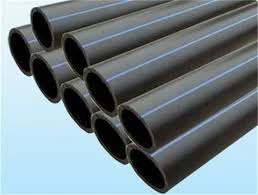Dec . 12, 2024 10:06 Back to list
hdpe sheet density
Understanding HDPE Sheet Density
High-Density Polyethylene (HDPE) is one of the most widely used types of plastic in various industries due to its remarkable properties. When it comes to applications in packaging, construction, and even consumer goods, HDPE stands out for its durability, chemical resistance, and lightweight nature. Among the many factors that contribute to the versatility of HDPE, its sheet density plays a crucial role, influencing everything from manufacturing processes to end-user application.
What is HDPE?
Before diving into the specifics of sheet density, it’s essential to understand what HDPE is. High-Density Polyethylene is a thermoplastic polymer produced from the polymerization of ethylene. Its molecular structure is characterized by a high degree of crystallinity, which enhances its strength and makes it more rigid compared to other types of polyethylene. The resulting material can be manufactured into a variety of forms, including sheets, which are frequently utilized in a host of industries.
The Importance of Sheet Density
Sheet density refers to the mass per unit volume of the HDPE material. Typically, HDPE has a density ranging from 0.93 g/cm³ to 0.97 g/cm³. This relatively low density makes it an ideal choice for applications where weight is a critical factor. In comparison to materials like metals or even other plastics, HDPE sheets can provide significant weight savings while maintaining structural integrity.
The density of HDPE sheets not only influences the physical properties of the material but also affects its performance in various applications. For instance, a lower density can lead to improved buoyancy, making HDPE sheets suitable for marine applications. Conversely, higher density translates to enhanced strength and rigidity, important for industrial uses such as in the construction of tanks and pipes.
Applications of HDPE Sheets Based on Density
The density of HDPE sheets can directly impact their applications. In the agricultural sector, for example, lightweight HDPE sheets are often favored for use in greenhouse covers, water tanks, and irrigation systems because they are easy to handle and install. They can also withstand environmental stressors like UV radiation and moisture without degrading.
hdpe sheet density

On the other hand, applications that require increased durability may opt for higher density HDPE sheets. In the food industry, for instance, high-density sheets are used for cutting boards, countertops, and containers. The resistance to chemical spills and the ease of cleaning are significant advantages of HDPE in this field.
Factors Influencing HDPE Sheet Density
Several factors can influence the density of HDPE sheets, including the molecular weight of the HDPE resin used, the processing techniques during manufacturing, and the specific additives incorporated into the compound. For instance, the incorporation of fillers can reduce density, while enhancing specific properties such as stiffness.
The processing methods employed, such as extrusion or injection molding, can also create variations in density. For example, sheets created through a more controlled manufacturing process may yield a more uniform density, optimizing performance and physical characteristics.
Environmental Considerations
As industries increasingly prioritize sustainability, the recyclability of HDPE sheets is also a key consideration. HDPE is a highly recyclable material, and its lightweight nature contributes to lower transportation costs and reduced carbon footprints. Responsible management of HDPE waste through recycling can help mitigate environmental impacts, allowing the material to be reused in various applications.
Conclusion
In summary, the density of HDPE sheets is a vital characteristic that influences their performance in multiple applications. From providing lightweight solutions in the agricultural sector to durable products in food processing, understanding HDPE sheet density is crucial for manufacturers and end-users alike. By selecting the right density, industries can leverage the full benefits of this versatile material, ensuring functionality, sustainability, and cost-effectiveness in their projects. As technology and processing methods evolve, the potential uses for HDPE sheets will undoubtedly expand, cementing their role in modern applications.
-
High-Quality PPR Pipes and Fittings Durable ERA PPR & PVC PPR Solutions
NewsJul.08,2025
-
Black HDPE Cutting Board - Durable, Non-Porous & Food Safe HDPE Plastic Cutting Board
NewsJul.08,2025
-
High-Quality CPVC Panel Durable HDPE & PVC Panels Supplier
NewsJul.08,2025
-
Double PE Welding Rod Supplier - High Strength, Durable & Versatile Welding Solutions
NewsJul.07,2025
-
High-Quality PVC-O Pipe Supplier Durable 75mm PVC Pipe & Connections Leading PVC Pipe Company
NewsJul.07,2025
-
HDPE Drainage Pipe Supplier – Durable & Corrosion-Resistant Solutions
NewsJul.06,2025

